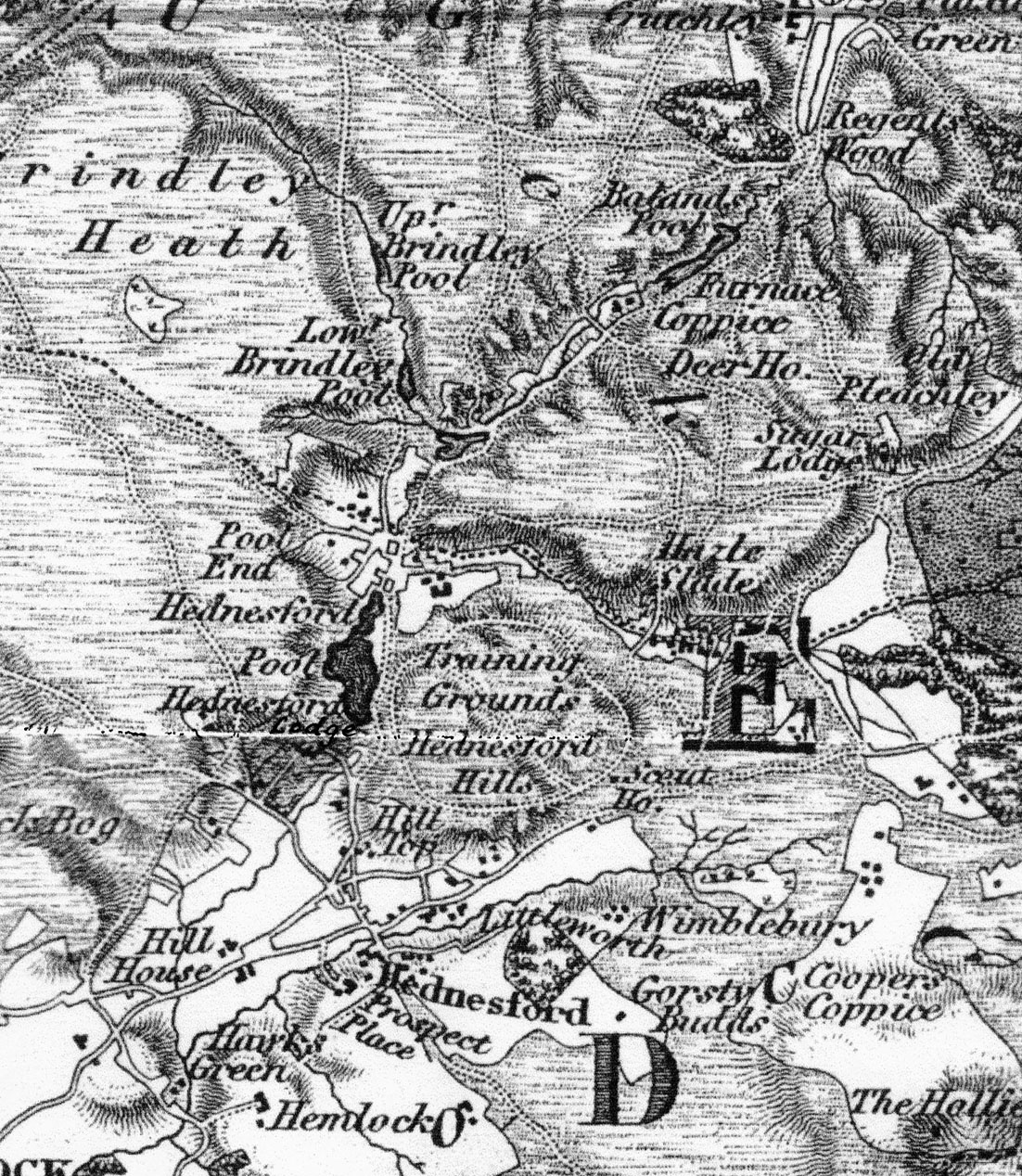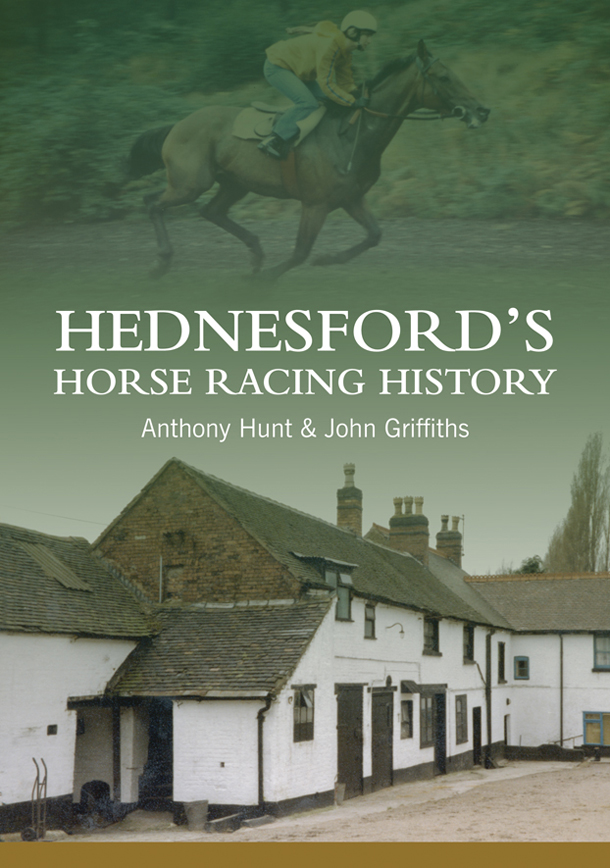Earliest meeting: Friday 6th November 1836
Final meeting: Monday 30th October 1871
There were training grounds in the town of Hednesford from the early days of the 18th century, although there were two key dates in the development of Hednesford first as a training centre and then as a racecourse. Prior to 1775 the open wasteland around Hednesford was used occasionally by Lord Paget, a key landowner in the vicinity of the town, and by the Earl of Uxbridge who was a keen racing fan. By 1775 the two came into conflict because the number of horses, jockeys and stable staff had increased to such an extent that the gallops were crowded and, more to the point, Lord Paget’s game stocks were being disturbed. He threatened to plough up the gallops, although in the end a compromise was reached in September 1775. Moving forward 60 years, the first race meeting was staged in the area on Tuesday 27th October 1835, although it was billed in all advertisements and in the Racing Calendar as Hedgeford. Within a year this had been changed to Hednesford, meaning technically the inaugural meeting was held on Friday 6th November 1836, opening with the Anglesey Stakes over 1 ½ mile heats. It took just two heats for General Yates to claim the 50 sovereigns with his bay filly Mersey. The feature race of the day was the Hednesford Stakes which saw Mr E Peel’s Verandah beat Fidelio and Columbine. Later in the card the Flare-Up Stakes went to Fabius and the Cannock Stakes to Aratus. Meetings continued annually for the next 6 years until Tuesday 8th November 1842 when the Great Welter Stakes, restricted to gentlemen riders, was won by Mr J Painter’s Ernest The First, while the Cannock Stakes went to Little Nell for Mr Hotham. Racing then lapsed before returning for two quite separate meetings; the first on Tuesday 26th November 1850 when three Handicap Sweepstakes were held, the most valuable being won by Mr Copeland’s Cheapside; the second on Monday 30th October 1871 when the three race card included the Hednesford Handicap Steeplechase in which Corfu beat Brighton and Gordian Knot.
This racecourse is covered in brief in Volume 1 of Racecourses Here Today and Gone Tomorrow. Ordering details shown below. However, it is covered in much more detail in John Griffiths and Tony Hunt’s book on Hednesford’s Racecourse, with full details shown below.
Marquis of Anglesey, Earl of Uxbridge, Mr Giffard, General Yates, Captain Bunney
Friday 4th November 1836
The Anglesea Stakes over 1 ½ miles
1. Mersey owned by General Yates
2. Newcastle owned by Captain Bunney
3. Misprint owned by Mr W Barrington
The Hednesford Stakes over a mile
1. Varandah owned by Mr E Peel
2. Fidelio owned by Mr B Collett
3. Columbine owned by Mr Giffard
The Flare-Up Stakes over 4 furlongs
1. Fabius owned by Mr Waskey
2. Zora owned by Mr Saunders
3. Wingfield owned by Mr E Peel
Where was Hednesford Racecourse?
John Griffiths comments, ‘The term Hedgeford, Hedgfud or Hedgford is the old name of Hednesford, many of the older locals still call it Hedgford today. Hednesford in those days was confined to an area around the Cross Keys Inn, a real den of iniquity and very well patronised by the racing folk. I, along with another author, Tony Hunt, wrote a book called Hednesford's Horse Racing History about six years ago and we did a lot of research into Hednesford but never found any positive identification of where the course was, but we are pretty certain they were on the top of Hednesford Hills. Shown below is an 1832 map of the Hednesford Training Grounds from the book but they certainly weren't confined to just that area on top of the Hills. In the book we have reference to the Hednesford Training Grounds from around 1770 and evidence in 1775 that they were up and running as Lord Paget complained about the over use of the Hills by the trainers, reference to that and the Hedgford meeting of 1835 are on page 132 of my Walsall Races book. In a newspaper cutting from 1824 about the ‘new’ Rugeley racecourse it commented that the "......course at Etchinghill, in the vicinity of the Training Ground at Hednesford", but that is stretching the use of the word "vicinity" a bit far. The nearest the training grounds came to Etchinghill was over two miles away. The term Cannock Chase from those far off days was a bit different to what it is today, it was much bigger and stretched for miles in all directions to Stafford in the north and Brownhills in the south.’ Rugeley Racecourse was said to be on the edge of Cannock Chase, while Cannock Racecourse was operational between 1846 and 1858.
I am grateful to Ordnance Survey (© Crown Copyright) for permission to use the 1830s map shown below, which was provided courtesy of John Griffiths.

For further reading I warmly recommend Walsall Races & Hednesford Training Grounds by John Griffiths, and Hednesford's Horse Racing History by Anthony Hunt and John Griffiths.
The B5 book has 180 pages, four of which are in colour showing Hednesford's Grand National winners including Chandler in 1848, there are 11 maps and 112 black and white pictures. Paintings of all four GN winners were completed, with Chandler based on an old engraving. The book is for sale at £12.99 with free P&P and is available by contacting jw418@btinternet.com

Much of the information about this course has been found using internet research and is in the public domain. However, useful research sources have been:-
London Illustrated News
Racing Illustrated 1895-1899
The Sporting & Dramatic Illustrated
Northern Turf History Volumes 1-4 by J.Fairfax-Blakeborough
The Sporting Magazine
A Long Time Gone by Chris Pitt first published in 1996 ISBN 0 900599 89 8
Racing Calendars which were first published in 1727



